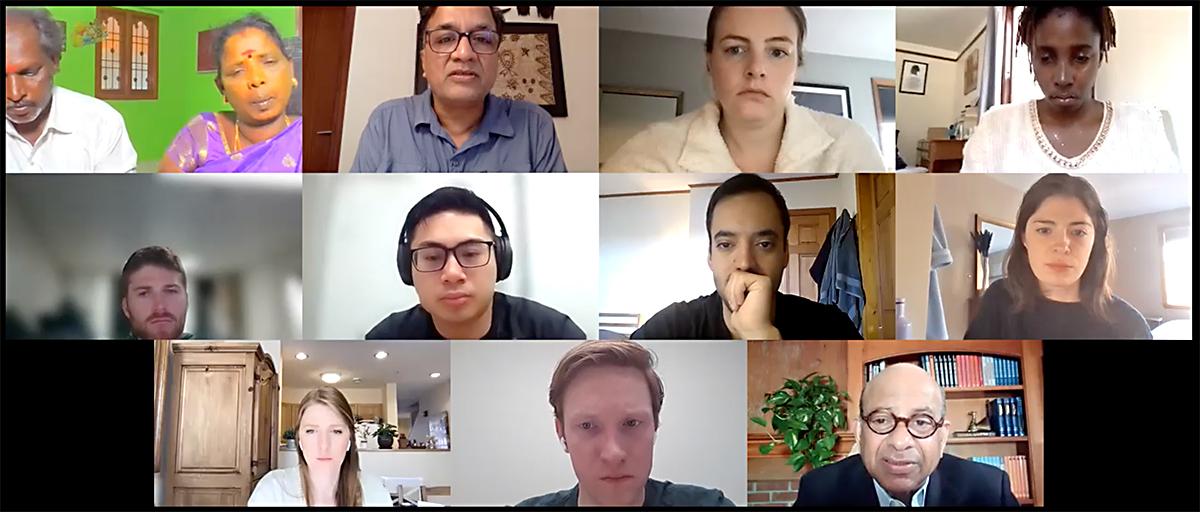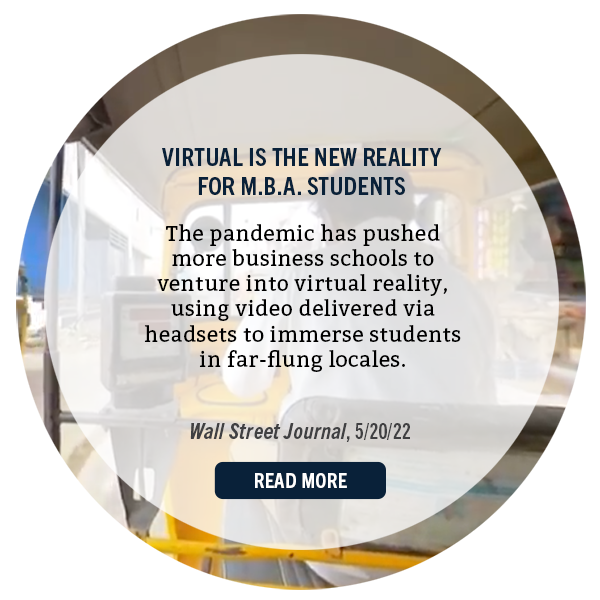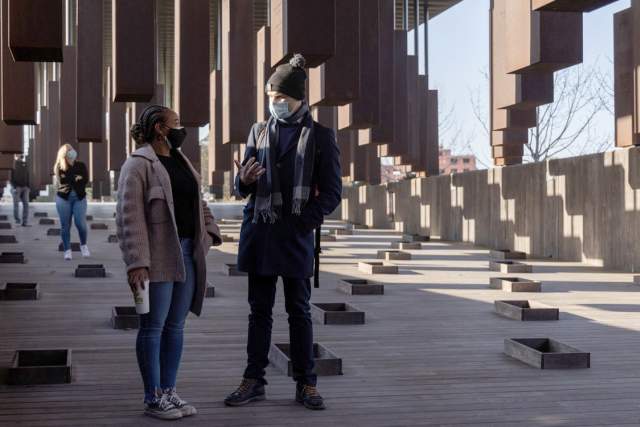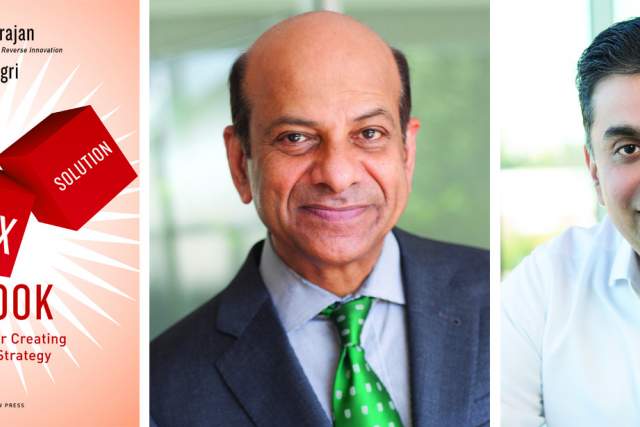In the summer of 2021, when the COVID-19 pandemic created uncertainty about travel restrictions and Tuck’s ability to send students abroad on Global Insight Expeditions (GIXs), Vijay Govindarajan, the Coxe Distinguished Professor of Management, sensed an opportunity for innovation.
During his 40-plus years of teaching strategic innovation to MBA students and executives, he has learned that unpredictability is a sort of gift to innovators, because it prompts them to dream about what might come next. Taking that cue from his own teaching, Govindarajan imagined a GIX that reversed the old framework: instead of bringing students to a foreign country, Tuck would bring the foreign country to Hanover, using virtual-reality and video technology. He pitched the idea to Dean Matthew Slaughter, framing it as an experiment and a hedge against the assumption that typical GIXs would proceed as planned in the spring of 2022.
By January of 2022, Govindarajan’s bet had paid off. The Omicron variant was spreading rapidly across the world, and the Deans’ office decided to cancel all six of the GIX trips that were scheduled to happen in March. Govindarajan had spent six months creating his Reverse Innovation Virtual Insight Expedition to Tamil Nadu, South India, thinking that he’d have 20 students. With the regular GIXs canceled, enrollment surged to 30. “This is the power of strategic resiliency,” Govindarajan says. “We experimented at the edges, and that allowed Tuck to pivot seamlessly to a VGIX.”
Govindarajan didn’t intend to replace traditional GIXs with virtual courses. He wanted to explore the potential of digital technology to augment and transform the learning experience in all realms of the MBA program and Tuck executive education. “Tuck will always be a residential program,” he says. “That’s the gold standard. I wanted to see if we could embed some diamonds into that gold standard and make the residential experience even shinier.”
What does a diamond-studded MBA experience look like? For Govindarajan, it begins with the philosophy that business has an important role to play in serving the billions of low-income people in developing countries who have mostly been ignored by capitalism. He addresses this concern in his theory of Reverse Innovation, which posits that businesses can innovate for developing markets, profit from them, and then take those innovations to developed markets and profit even more. The VGIX brings this idea to life by challenging students to conceive of a personal health and wellness problem in South India that business could address and that could eventually be brought to, say, the U.S. or Europe.
A business problem is always embedded in the cultural context. If you don’t understand the culture and social life of these people, you won’t understand their problems with personal health and wellness.
—Vijay Govindarajan
Govindarajan knows Reverse Innovation for South India can’t happen completely in an office building in New York or London. “A business problem is always embedded in the cultural context,” he says. “If you don’t understand the culture and social life of these people, you won’t understand their problems with personal health and wellness.” The corollary is that Reverse Innovation is much more likely to be successful if a firm sets up a satellite office in the South India city of Chennai. With the VGIX, Govindarajan is testing if there’s a hybrid approach. Namely, he created a didactic market-research system that blends theory, practice, and technology.
The course begins with a lesson on Reverse Innovation from Govindarajan. In the second session, students meet an entrepreneur who has successfully executed Reverse Innovation in India, inventing an affordable device that screens for cataracts and glaucoma, and which is now being sold in the U.S. Sessions four through seven are live customer interviews, and the students prepare for them by doing asynchronous cultural, historical, and sociological learning, via text and video; and by watching virtual-reality videos with Oculus headsets that give them a 360-degree sense of the landscape and communities in South India. In the final three weeks of the course, students form teams and work on action-learning projects. With the help of leadership and cross-cultural coach Maarten Asser, the teams find wicked health-and-wellness problems that business can solve, and then pitch their ideas to Indian venture capitalists. “One of the things I try to teach the students is to critically examine their assumptions,” Asser says. “If you’re assumption is wrong and doesn’t fit the culture and lifestyle, then you miss your target by a lot.”

As part of the course, the students conducted live customer interviews with four families at the base and middle of the economic pyramid, in both rural and urban communities.
Govindarajan hales from India and appreciates its vastness and diversity. He designed the course to highlight some of this diversity by focusing on four families at the base and middle of the economic pyramid, in both rural and urban communities. Taken together, these families are representative of more than 800 million potential consumers in India, which brings the scale necessary to spur profit-minded innovation. The families include hunter-gatherer-style fishermen in Vadapattinam; construction laborers in Kovilambakkam; a corporate employee in the middle-income neighborhood of Vettuvankeni; and a farmer and social worker in Koovathur.
Even without a physical presence in India, we still felt emotionally connected with the people we spoke to. I learned that empathy and respect are really important to be a problem solver in the world. It was a life changing experience for me.
—Yuta Ohashi T’22
None of this would have been possible without Mahesh Sriram, an experiential travel professional based in Chennai. Sriram met Govindarajan about 17 years ago, while Govindarajan was working on the Tuck Global Leadership executive education program. For the past 16 years, Sriram and his team at I-India Leadership and Innovations have been designing and delivering the field experiences and programs in India and China for the Global Leadership program; together, they have more than 50 years of experience working for Tuck executive education. Their task for the VGIX was to create videos and VR experiences that allowed students to develop empathy for the families they were going to interview, and to include a narrative arc to the content that gave the students clues to some of the health issues the family members endure.
“What we have learned is we can do some very objective, immersive videos that move you from Hanover to India, and tell you about the history, geography, culture, environment, education, and economy,” Sriram says. “And we can do this second level of stories, where characters are going through situations. Moreover, we can produce VR videos that allow students to be invisible and just watch and listen to what’s going on. This gives them the same feeling as if they are visiting that village.”
This is a huge production task, complete with I-India staff on location in India, using traditional 2D video cameras, advanced 360-VR cameras with surround sound, and often shooting in the subjects’ homes—a time consuming process to educate them about 360 and VR, get their consent, and then capture what they are seeing and hearing. “The VR scenes are a different type of storytelling,” Sriram says. “The story has to be present in the ambiance, and you have to capture the right frames.” One of the VR scenes puts students on the beach in Vadapattinam, where they see and hear fisherman at work, and fishmongers and families conversing in Tamil. In another scene, students can walk with locals to a corner store in an urban neighborhood in Kovilambakkam, see the houses, wagons, and puddles, and notice how people buy necessities like soap in small packets, because they can’t afford larger sizes.
While these unique windows into life in India were impactful for students, the customer interviews were truly transformational. For Yuta Ohashi T’22, who is originally from Japan, the direct interaction with families was the highlight of the course. By speaking with all the families, he learned that health and wellness problems stem from lack of awareness, access, and affordability. He saw this, for example, in the fishermen who discounted the damaging health effects of years spent in the bright sun on the ocean and told how they can’t go to the hospital for care because it’s too expensive. He also learned that diabetes is a common ailment in India, and noticed that both low-income and middle-income people suffer from it, but the disease has different pathways for each class. “The base-of-the pyramid people have no options for nutrition,” he explains. “They have to eat what they can afford, or what’s provided by the government. The middle-of-the-pyramid people have a choice, but they desire to eat cheap, unhealthy food.” Ohashi and his action-learning team proposed the idea of raising awareness and access to nutritious food, and to start by having teams visits schools and score them on nutrition, so they could identify areas to prioritize. “Even without a physical presence in India, we still felt emotionally connected with the people we spoke to,” he says. “I learned that empathy and respect are really important to be a problem solver in the world. It was a life changing experience for me.”
By being empathetic, listening to people and not judging them, it sent the conversation in a whole new direction.
—Fatmah Ba T’22
Fatmah Ba T’22 enrolled in the VGIX because she wanted to spend part of her MBA experience exploring an emerging country. Ba is from Senegal and hoped to bring lessons from the VGIX back home one day to help solve health and wellness problems there. She appreciated how open the people were in their interviews, and she found it interesting that people in India and more developed countries sometimes share the same health issues, such as poor nutrition. “By being empathetic, listening to people and not judging them, it sent the conversation in a whole new direction,” she reports. Her action-learning team hypothesized that low-income Indians are aware of the benefits of healthy eating but can’t afford foods that are rich in protein and vitamins. Based on learning that the interviewees buy small sachets at the corner store, Ba’s team proposed reproducing that model with packets of seasonings or drink mixes fortified with vitamins and proteins. “Pitching this to the VCs was a great experience,” she says. “They liked our idea because sachets are something people are already using in remote areas. They also pushed us to think about a business model, and we proposed selling the supplements to women’s self-help groups, who could then promote the packets via word-of-mouth.”


